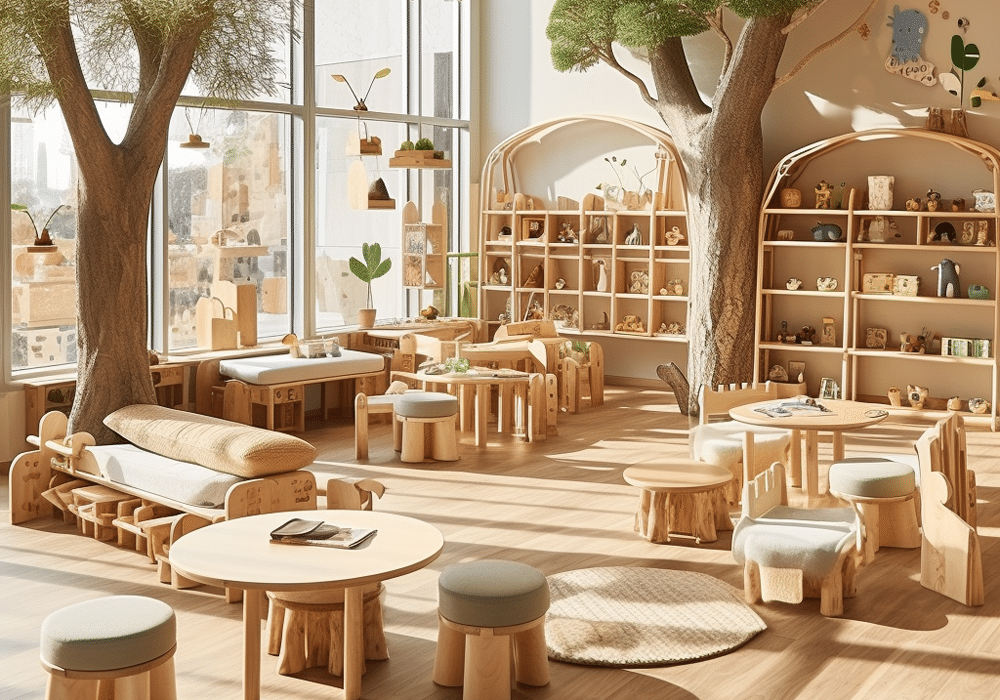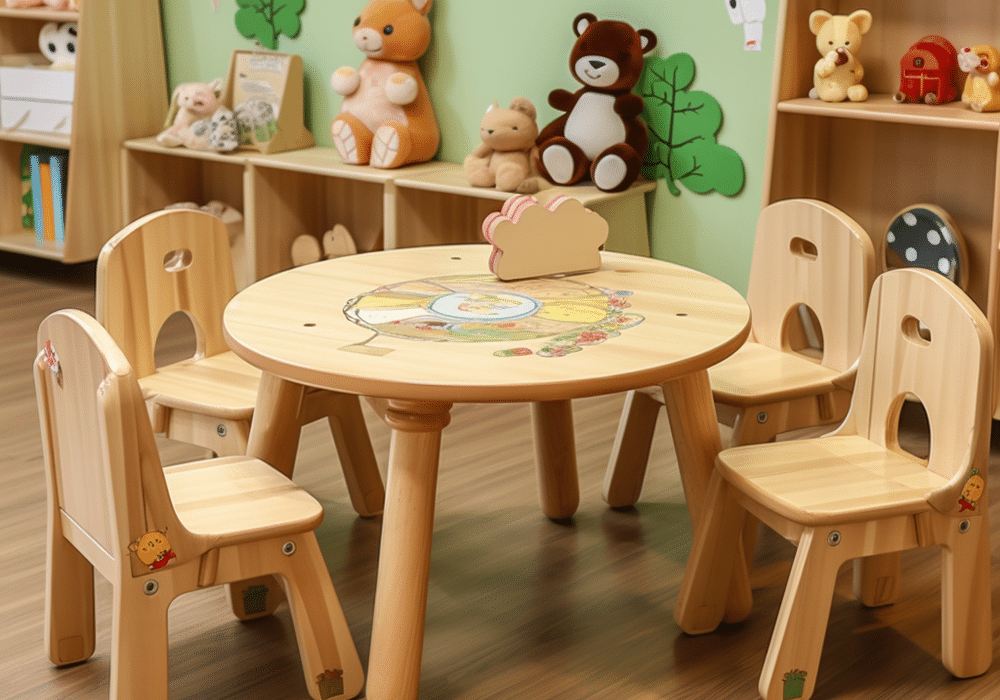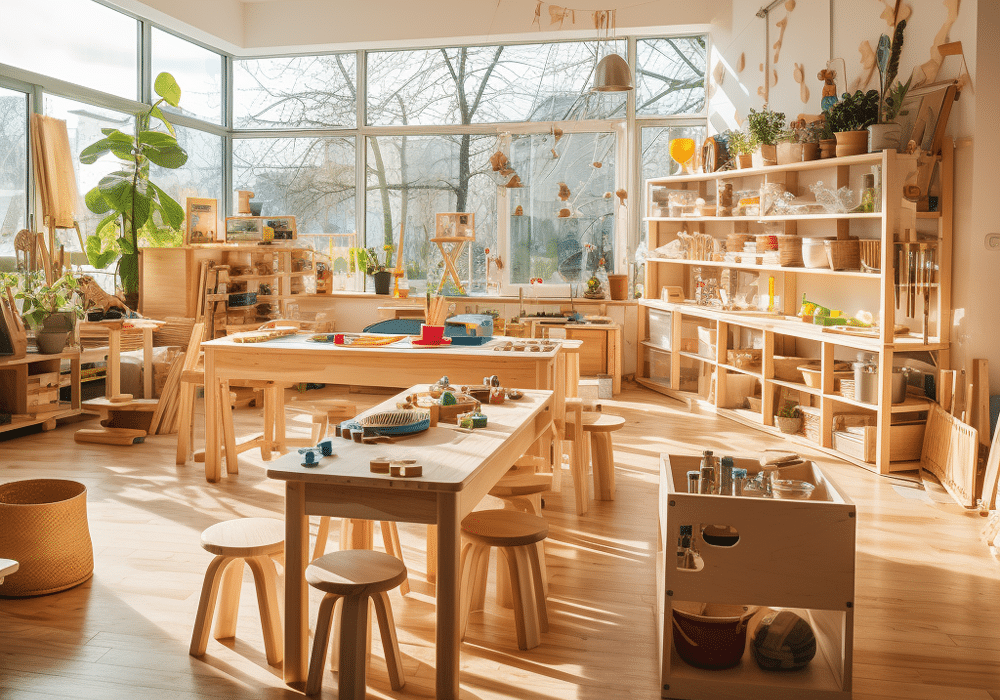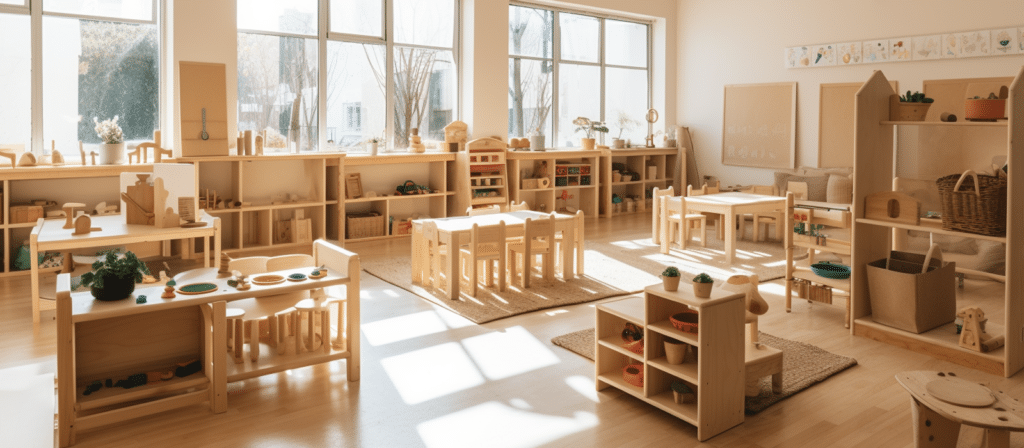Are you intrigued by the art of harmonizing beauty and practicality in Montessori furniture? Join us on a journey where we explore the delicate balance between aesthetics and functionality in Montessori furniture design. Discover how these two essential elements come together to create inviting and purposeful learning environments.
Balancing Aesthetics and Functionality in Montessori Furniture is an intricate dance that marries form and function seamlessly. In the world of Montessori, furniture isn’t merely functional; it’s a work of art designed to enhance the learning experience. Each piece of furniture is a carefully considered element that combines visual appeal with practical utility, ensuring that the learning environment is both aesthetically pleasing and conducive to exploration and discovery.

Montessori Furniture: Aesthetics vs. Functionality
When designing Montessori furniture, there is often a tension between aesthetics and functionality. On one hand, we want our furniture to be visually pleasing, creating a warm and inviting environment for children. On the other hand, we must prioritize functionality, ensuring that the furniture meets the specific needs of the child and supports their independence and exploration.
Finding this balance requires careful consideration of various factors. One of the key aspects is the use of natural materials. Montessori education emphasizes a connection to nature, and incorporating natural elements into the furniture design helps create a harmonious and calming environment. For example, using wood instead of plastic for tables and chairs not only enhances the aesthetics but also provides a more tactile and sensory experience for the child.
Creating Purposeful Design
Another crucial aspect of balancing aesthetics and functionality in Montessori furniture is creating purposeful design. Each piece of furniture should serve a specific function and be tailored to meet the developmental needs of the child. For example, low tables and chairs allow children to comfortably engage in activities without relying on adult-sized furniture. Similarly, shelves at child height enable easy access to materials and encourage independence in choosing and returning items.
By designing furniture with purpose and intention, we can ensure that every piece serves the child’s needs while still maintaining a visually pleasing aesthetic. This approach not only enhances the learning environment but also promotes a sense of ownership and autonomy for the child.

Collaborating with Designers and Educators
To strike the perfect balance between aesthetics and functionality, collaboration between designers and educators is essential. As the CEO of Beechair, I work closely with Montessori educators to understand their specific requirements and insights. By incorporating their expertise and feedback into the design process, we can create furniture that truly meets the needs of the children and enhances their learning experience.
Collaboration with designers is equally important. Designers bring their creativity and expertise to the table, ensuring that the furniture not only functions well but also looks visually appealing. By working together, we can brainstorm innovative ideas and find unique solutions to the challenges of balancing aesthetics and functionality.
Finding Inspiration in the Montessori Philosophy
The Montessori philosophy itself provides inspiration for balancing aesthetics and functionality in furniture design. Maria Montessori believed in the beauty of simplicity and the importance of creating a prepared environment that supports the child’s natural development. By embracing these principles, we can design furniture that is both aesthetically pleasing and highly functional.
For instance, incorporating clean lines and simple shapes in the furniture design can create a sense of harmony and order. Additionally, using a neutral color palette with pops of vibrant hues can enhance the visual appeal while still maintaining a calm and soothing atmosphere.
Embracing Flexibility and Adaptability
In the world of Montessori education, flexibility and adaptability are key. Children grow and develop at their own pace, and the furniture should be able to accommodate their changing needs. This means designing furniture that can be easily adjusted or converted to meet the child’s evolving requirements.
For example, a table that can be adjusted in height allows the furniture to grow with the child, providing a comfortable and ergonomic workspace at every stage. Similarly, modular shelving systems that can be rearranged or expanded offer flexibility in organizing materials and adapting to changing learning objectives.

The Impact of Balanced Design
When aesthetics and functionality are successfully balanced in Montessori furniture, the impact on the learning environment is significant. Children are naturally drawn to beautiful and inviting spaces, and aesthetically pleasing furniture contributes to their engagement and motivation. At the same time, functional furniture empowers children to navigate their environment independently, fostering a sense of confidence and self-reliance.
By striking the right balance, we create an environment that not only supports the child’s physical and cognitive development but also nurtures their aesthetic sensibilities. Montessori furniture becomes a tool for both learning and appreciation of beauty, enriching the child’s educational journey.
Conclusion
Balancing Aesthetics and Functionality in Montessori Furniture is an art form that transforms learning spaces into captivating and purposeful environments. The fusion of design elegance, purposeful arrangement, natural materials, and multi-functional design elements elevates the educational experience for young learners. In Montessori classrooms, beauty isn’t superficial; it’s an integral part of the learning process, engaging and inspiring children on their journey of exploration and discovery.










